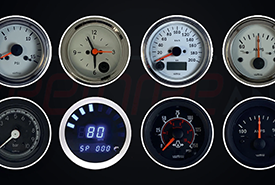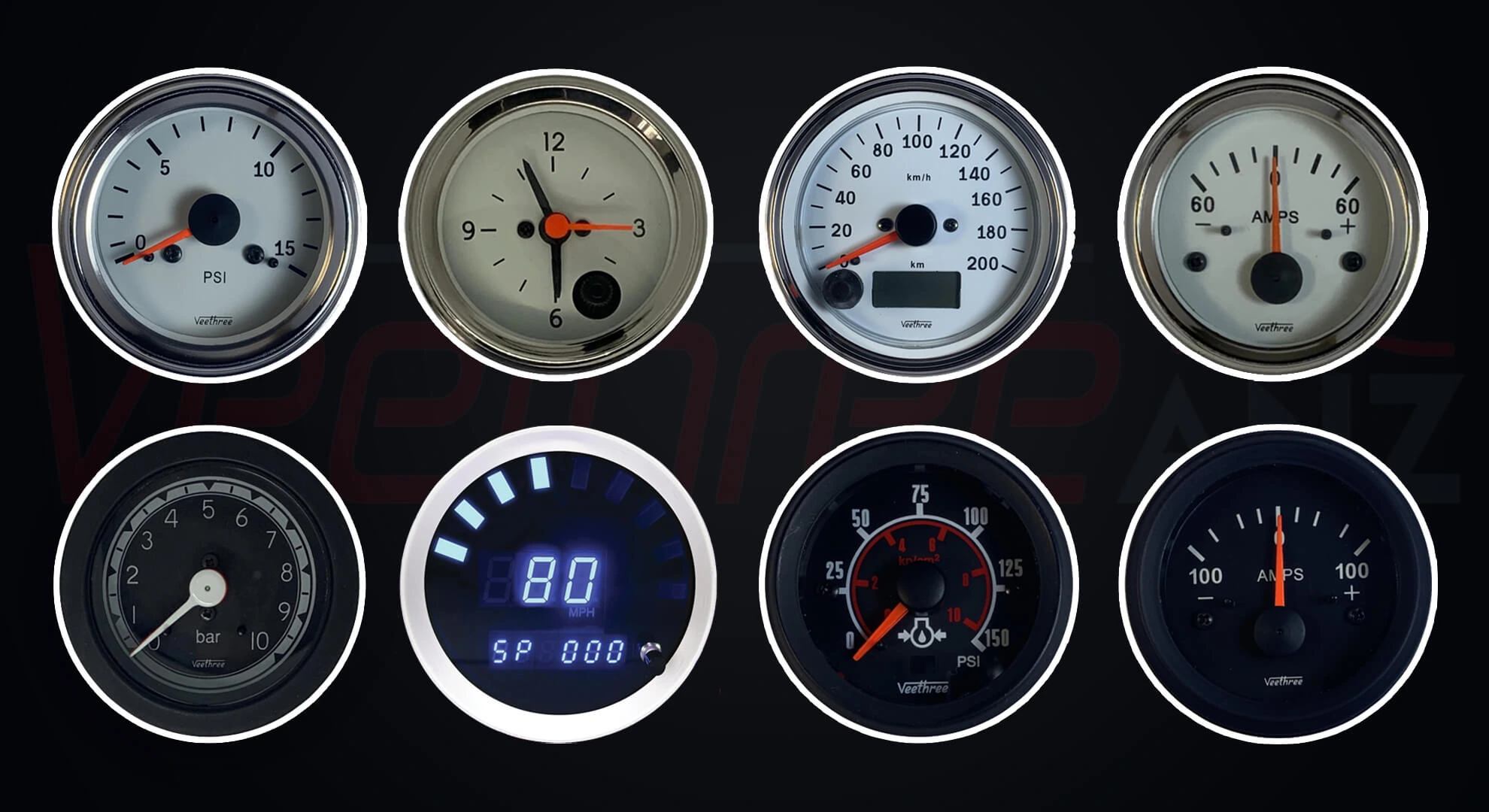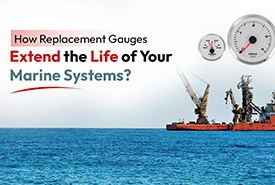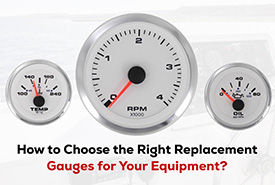- Free shipping for NZ Customers. All items are available in NZ warehouse
- +64 (0) 212576146
- [email protected]
Replacement Gauges for Industrial Applications: What You Need to Know

The Evolution of Marine Monitoring: From Mechanical to Electronic Gauges
August 6, 2025Ever walked into a plantroom, glanced at a gauge, and thought, “That needle’s got the wobbles”? I once visited a quarry in regional WA where the maintenance lead had a milk crate full of “dead” gauges fogged lenses, bent pointers, and a couple that looked like they’d gone ten rounds with a jackhammer. The fix wasn’t just swapping like-for-like; it was choosing the right Replacement Gauges for the job they had. That’s the trick. Not just replacing but upgrading, quietly and sensibly, so you stop the merry-go-round of failures.
When do you replace rather than recalibrate?
If a gauge only needs a tweak, calibration is great. But there are red flags where replacement is smarter:
- Persistent pointer flutter or slow response (often vibration/pulsation damage).
- Visible damage: cracked lens, buckled pointer, dented case.
- Repeated drift outside tolerance between calibrations.
- Condensation inside the lens, corrosion on the wetted parts or case.
- Service conditions have changed (hotter, dirtier, more pulsy, or higher pressure).
A big chunk of field failures traces back to vibration, pulsation, temperature extremes, overpressure, corrosion, clogging, and rough handling. If your application lives with any of those, the cure is usually about spec, not just swapping brands.
The spec that matters and how to get it right
Think of a Replacement Gauge like PPE for your process: it must fit the hazard. Key calls:
1) Pressure rangePick a range where your normal operating pressure sits roughly in the middle third of the dial. As a rule of thumb, working pressure should be ≤75% of full scale; if pulsation’s present, keep it to about two-thirds. This gives you headroom for spikes and keeps the mechanism in its sweet spot.
2) Accuracy class & dial sizeGeneral industrial processes typically run fine at around ±1% of full scale, with critical processes at ±0.5% and test gauges at ±0.25% or better. Bigger dials help you read that accuracy from a couple of metres away.
3) Media & wetted materialsBrass works for many clean, non-corrosive fluids; stainless steel is the safe bet for aggressive or unknown media. If your process is sticky, crystallising, or filthy, consider a diaphragm seal to keep the goo out of the gauge internals.
4) Mounting, connection, and orientationFront flange for panels, bottom entry for pipes—choose what keeps the dial easy to read and the movement out of harm’s way. Keeping the case aligned and the gauge isolated from vibration sources pays off in spades.
5) TemperatureHigh ambient or process temps affect accuracy and lifespan. Liquid-filled, sealed cases reduce condensation but can introduce small temperature-related indication shifts; temperature-compensated designs and proper placement/isolators help.
Surviving the real world: vibration, pulsation & spikes
If your gauge sits on a reciprocating pump line, you already know the dance: the needle chatters itself silly. Three simple upgrades can transform reliability:
- Liquid-filled case (often glycerine; silicone for colder/hotter extremes): the fill fluid damps vibration and pulsation, lubricates the movement, and keeps moisture out.
- Snubber or restrictor tames fast spikes before they reach the Bourdon tube.
- Correct range & accuracy keeps the mechanism working where it’s happiest.
These aren’t nice-to-haves; they’re proven fixes in harsh service.
Quick anecdote: On a Pilbara pump skid, we swapped a standard dry gauge for a stainless, liquid-filled model with a snubber and nudged the range up so normal sat at ~60% of scale. Failures went from quarterly to “haven’t touched it in a year.” That’s not luck—that’s damping and good sizing doing their job.
Calibration and traceability
If the gauge informs anything important—product quality, environmental discharge, operator safety—get calibration you can stand behind. Look for:
- ISO/IEC 17025 accredited calibration (or clear traceability to a national metrology institute).
- Uncertainty stated on the cert (so you know the measurement quality you’re buying).
- Intervals set by risk and usage, not a blanket “annual by habit.”
Global accreditation bodies spell out traceability routes and common non-conformities (traceability gaps are among the most cited issues). Ask for scope docs if needed, and store certs with the asset record so you don’t play scavenger hunt during audits.
A word on marine and mixed fleets
Plenty of operations in Australia and New Zealand straddle marine and land-based kit—tugs, fish farms, quarry loaders, and site gensets all in the same maintenance portfolio. If you want fewer parts on the shelf, common platforms help for example, a family of Veethree gauges that covers mechanical, electrical, and J1939 options with consistent styling and sealing. That continuity reduces spares, training, and head-scratching at 2 a.m. when you’re swapping something in the rain.
Final take
Veethree New Zealand stocks mechanical, electrical, electronic, and CAN-bus options. Flick us the process media, pressure range, environment, and how the gauge is mounted, and we’ll point you to a replacement that just works.
FAQs




